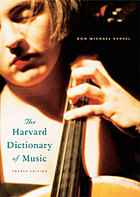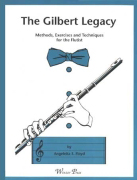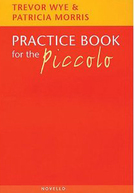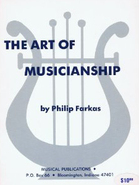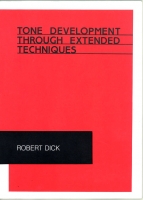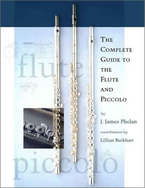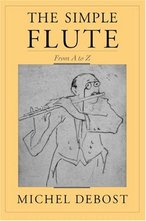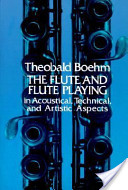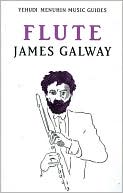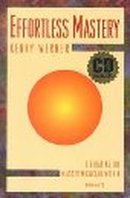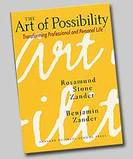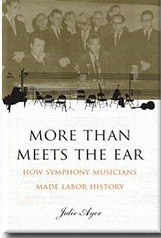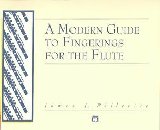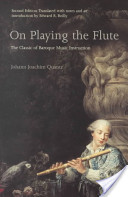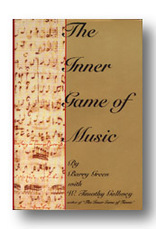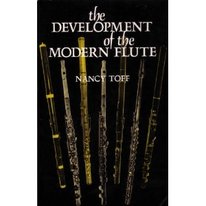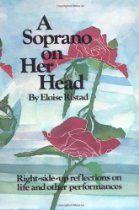A Flutist's Library
(Click on the icon to go to a purchase site)
|
ISound in Motion
David McGill has assembled an exhaustive study that uses the musical concepts of the legendary Marcel Tabuteau as a starting point from which to develop musical thought. McGill methodically explains the frequently misunderstood "Tabuteau number system" and its relationship to note grouping-the lifeblood of music. The controversial issue of baroque performance practice is also addressed. Instrumentalists and vocalists alike will find that many of the ideas presented in this book will help develop their musicianship as well as their understanding of what makes a performance "musical." |
|
The Harvard Dictionary of Music
By Don Michael Randel This classic reference work, the best one-volume music dictionary available, has been brought completely up to date in this new edition. Combining authoritative scholarship and lucid, lively prose, the Fourth Edition of The Harvard Dictionary of Music is the essential guide for musicians, students, and everyone who appreciates music. |
|
The Gilbert Legacy
By Angeleita Floyd. The fundamental purpose of this book is to present the teaching concepts and methods of the prominent flutist and teacher, Geoffrey Gilbert. The resulting work provides a compendium of information for the intermediate and advanced player seeking a more natural and logical approach to the flute. In addition, many fundamental and beginning concepts are presented which have proven beneficial to flutists of all ages. A particular strength of this book is the numerous illustrations of hand, body and head positions. Chapters include the life of Geoffrey Gilbert; introduction to his teaching; fundamental technique; breathing, blowing, and breath control; embouchure; techniques of sound; expressive nuances of sound; articulation; and practicing. |
|
The Art of Musicianship
By Phillip Farkas The Art of Musicianship explores the skills, knowledge and sensitivity needed by the mature musician to perform in an artistic and professional manner. It has been used since 1976 in brass classes and music appreciation courses across the country. Topics of discussions include; Musicianship, phrasing, dynamics, tempo, rhythm, articulation, intonation, ensemble playing and stage fright, to name a few. |
|
Tone Development Through Extended Techniques
By Robert Dick Daily studies designed to enable the Flutist to produce Optimum Resonance and to develop the Embochure Strength and Sensitivity to confidently play Multiphonics, Whisper Tones, Natural Harmonics and other extended Timbres while simultaneously developing the Power, Color and Control of the tone for traditional music. An important feature is the unique presentation of "Throat Tuning." A breakthrough technique for tone development. "A book that belongs in everyone's library." JUDITH BENTLEY, Flute talk |
|
The Complete Guide to the Flute and Piccolo
By James Phelan and Lillian Burkart "This well-researched, easy-to-read guide to basic design and maintenance of the flute and piccolo should be a part of every flutist?s library. An indispensable resource, Jim Phelan?s revised second edition, with numerous contributions from Lillian Burkart, includes quotes from historical flute makers such as Quantz and Boehm, and modern sources such as Verne Q Powell and Albert Cooper. Phelan?s use of scientific terminology is clear and accessible for performers and teachers alike." Mary Karen Clardy, Professor of Flute, University of North Texas |
|
The Simple Flute from A to Z
By Michel Debost The Simple Flute will be a welcome addition to any serious or novice flutist's library. In addition, the book includes original exercises such as "Debost's Scale Game," making it an excellent resource for flute teachers. Debost concludes each essay with "In a nutshell" and "Please refer to" boxes that make the book easy to browse, dog-ear, and return to again and again. Offering concise, common-sense solutions for flutists of all levels, this book is an ideal reference guide on flute performance. |
|
The Flute and Flute Playing in Acoustical, Technical, and Artistic Aspects
By Theobald Boehm Theobold Boehm stands at the junction of three great roads: science, engineering, and music. He was a flautist of reknown, and a student of both the theory as well as the practice of all the branches of science and engineering which touch on music - in particular as it applies to his chosen instrument. In 1871 he published this book which examines his life's work on the flute, as he brought it from its primitive early form to the modern form now in use. |
|
Flute
By James Galway Sir James Galway, nicknamed "the man with the golden flute," is widely regarded as both a supreme interpreter of the classical flute repertoire and a consummate entertainer whose appeal crosses all musical boundaries. As the most televised and recorded classical artist performing today, Sir James has made himself a legend, a modern musical master whose virtuosity on the flute is equaled only by his limitless ambitions and vision. |
|
Kincaidiana
By John Krell This is an sterling example of a student's lesson notebook. John Krell, piccolo with the Philadelphia Orchestra, was a student of William Kincaid, the father of the American sound of flute playing. These notes offer insight into his concepts of vibrato, articulation, phrasing, breathing and intonation. |
|
The Musician's Way
By Gerald Klickstein In The Musician's Way, veteran performer and educator Gerald Klickstein combines the latest research with his 30 years of professional experience to provide aspiring musicians with a roadmap to artistic excellence. Part I, Artful Practice, describes strategies to interpret and memorize compositions, fuel motivation, collaborate, and more. Part II, Fearless Performance, lifts the lid on the hidden causes of nervousness and shows how musicians can become confident performers. Part III, Lifelong Creativity, surveys tactics to prevent music-related injuries and equips musicians to tap their own innate creativity. |
|
Effortless Master: Liberating the Master Musician Within
By Kenny Werner Effortless Mastery: Liberating the Master Musician Within is a book for any musician who finds themselves having reached a plateau in their development. Werner, a masterful jazz pianist in his own right, uses his own life story and experiences to explore the barriers to creativity and mastery of music, and in the process reveals that ''Mastery is available to everyone,'' providing practical, detailed ways to move towards greater confidence and proficiency in any endeavor. While Werner is a musician, the concepts presented are for every profession or life-style where there is a need for free-flowing, effortless thinking. |
|
The Art of Possibility: Transforming Professional and Personal Life
By Rosamund Stone Zander and Benjamin Zander Based on the principles developed through the authors' unique partnership, Mr. Zander gives presentations to managers and executives around the world and Ms. Zander conducts workshops for organizations on practicing the art of possibility. |
|
A Modern Guide to Fingerings for the Flute
By James Pellerite One of the most complete guides for the flute ever published! Covers basic fingerings, trills, tremolos (3rds through octaves), quarter-tones, multiphonics. A unique reference book for studio and classroom by James J. Pellerite, Professor of Flute, Indiana University. |
|
A Handbook of Literature for the Flute
By James Pellerite Revised 3rd edition. An annotated list of solos, graded method materials, reference reading, flute ensembles, music for alto flute, piccolo and bass flute. Over 3,500 entries, representing more than 1,700 composers and authors. Used throughout the world by flutists, artists, teachers, libraries and music dealers. |
|
On Playing the Flute
Johann Joachim Quantz's On Playing Flute has long been recognized as one of the most significant and in-depth treatises on eighteenth-century musical thought, performance practice, and style. This classic text of Baroque music instruction goes far beyond an introduction to flute methods by offering a comprehensive program of studies that is equally applicable to other instruments and singers. The work is comprised of three interrelated essays that examine the education of the solo musician, the art of accompaniment, and forms and style. Quantz provides detailed treatment of a wide range of subjects, including phrasing, ornamentation, accent, intensity, tuning, cadenzas, the role of the concertmaster, stage deportment, and techniques for playing dance movements. |
|
Audition Success
By Don Greene An audition can be the most frightening - and most important -- ten minutes in a young artist's career. Now comes Don Greene, a remarkable teacher who has worked with Metropolitan Opera musicians, singers from around the country, and athletes including Greg Louganis -- all of whom know what it means to perform under extreme stress. Audition Success presents a groundbreaking method that has already made Greene one of the country's leading audition trainers. Combining specially designed self-tests and real-life examples from the careers of two performers, Audition Success will help performers understand what prevents them from nailing an audition and give them the tools to reach their goals. |
|
Nancy Toff is the author of The Development of the Modern Flute and Georges Barrere and the Flute in America. Highly respected as a writer, researcher, and lecturer, she has been a consultant to the Dayton C. Miller Flute Collection in the Library of Congress and the Department of Musical
Instruments of the Metropolitan Museum of Art. A former president of the New York Flute Club, she studied flute with Arthur Lora and James Pappoutsakis. |
|
A Soprano on Her Head
By Eloise Ristad Eloise Ristad deals here with complex problems which torment and cripple so many of our most creative and talented people, and she does so with compassion, wisdom, and wit. The problem of stage fright, for instance, is a suffering of epidemic proportions in our society, and involves modalities of thought and projections that rob spontaneity and enthusiasm in artistic performance. |
|
Making Music in Looking Glass Land
By Ellen Highstein This book is the answer to the need for a practical guide for launching careers in classical music - business survival skills for the young professional musician. The publication is a no fuss, straight-talk description of the arena, now in its 4th edition. |

